When it comes to delicious and nutritious fruits, those starting with the letter M offer a fantastic array of flavors and health benefits. From tropical treasures to more familiar favorites, let’s explore 15 mouthwatering fruits that start with the letter M.
1. Mango
First up, mangoes are tropical delights with sweet, juicy flesh. They are a rich source of vitamins A and C, making them a great immune-boosting snack. Mangoes thrive in tropical and subtropical regions, with top producers including India, Thailand, and the Philippines. They’re often eaten fresh, but they can also be great additions to smoothies, salsas, and desserts. Mangoes are the “king of fruits” in many cultures, and over 1,000 varieties exist.
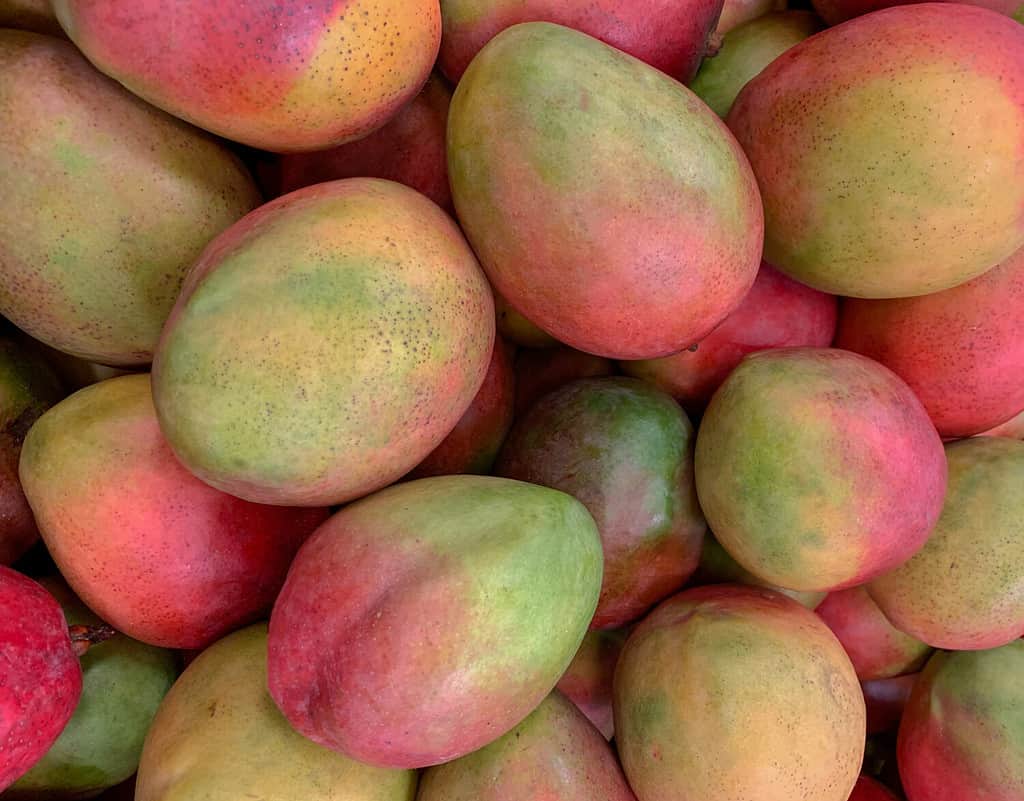
Mangoes thrive in tropical and subtropical regions, with top producers including India, Thailand, and the Philippines.
©Rosamar/Shutterstock.com
2. Melon
Melons come in various types, including watermelon and cantaloupe. They’re a great source of hydration, as they contain over 90% water. Melons grow in regions with warm summers, such as the United States and Spain. You can enjoy them fresh, either sliced, in salads, or blended into refreshing drinks.
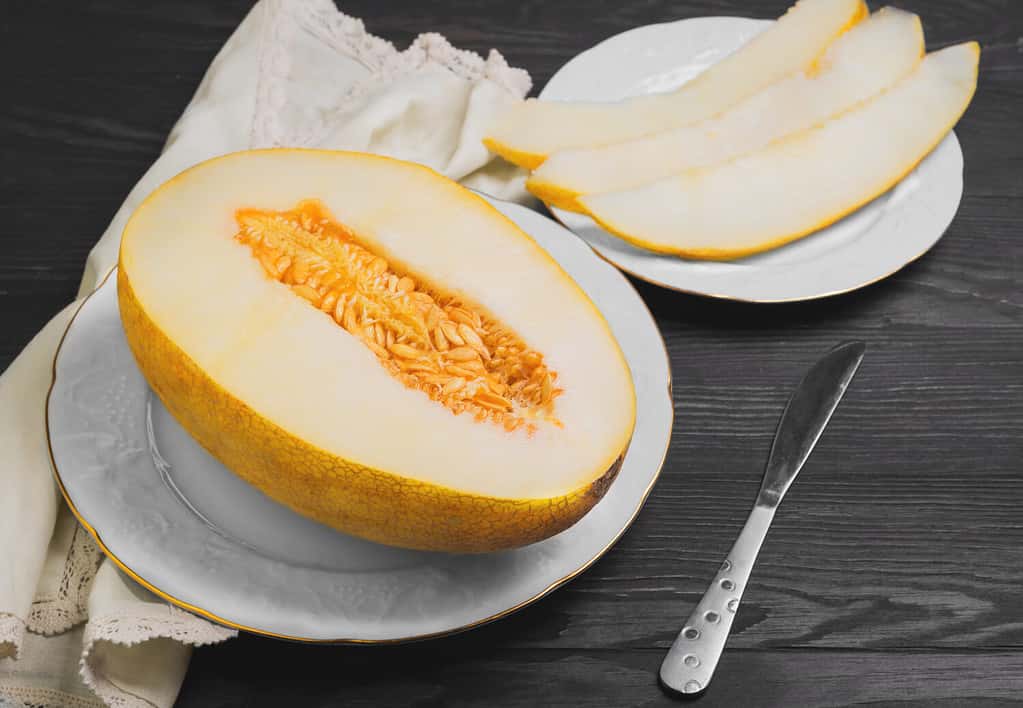
Packed with hydration, melons contain over 90% water.
©Sergey Fatin/Shutterstock.com
3. Mulberry
Mulberries are well-known for their sweet, berry-like flavor and rich nutritional profile. These dark-colored berries are a good source of vitamin C, vitamin K, iron, potassium, and dietary fiber. They also contain anthocyanins, which are natural antioxidants with potential health benefits. Commonly cultivated in regions like Iran and Turkey, black mulberries are often enjoyed fresh, used in baking, or turned into jams and desserts.

Commonly cultivated in regions like Iran and Turkey, mulberries are a good source of vitamin C, vitamin K, iron, and potassium.
©altanakin/iStock / Getty Images Plus via Getty Images
4. Mandarin Orange
Mandarin oranges are vibrant, easy-to-peel fruits that are rich in vitamin C and fiber. They are primarily cultivated in China, Spain, and the United States. These citrus gems can be consumed fresh or added to salads and desserts. Mandarin oranges are often associated with Chinese New Year and symbolize good luck.
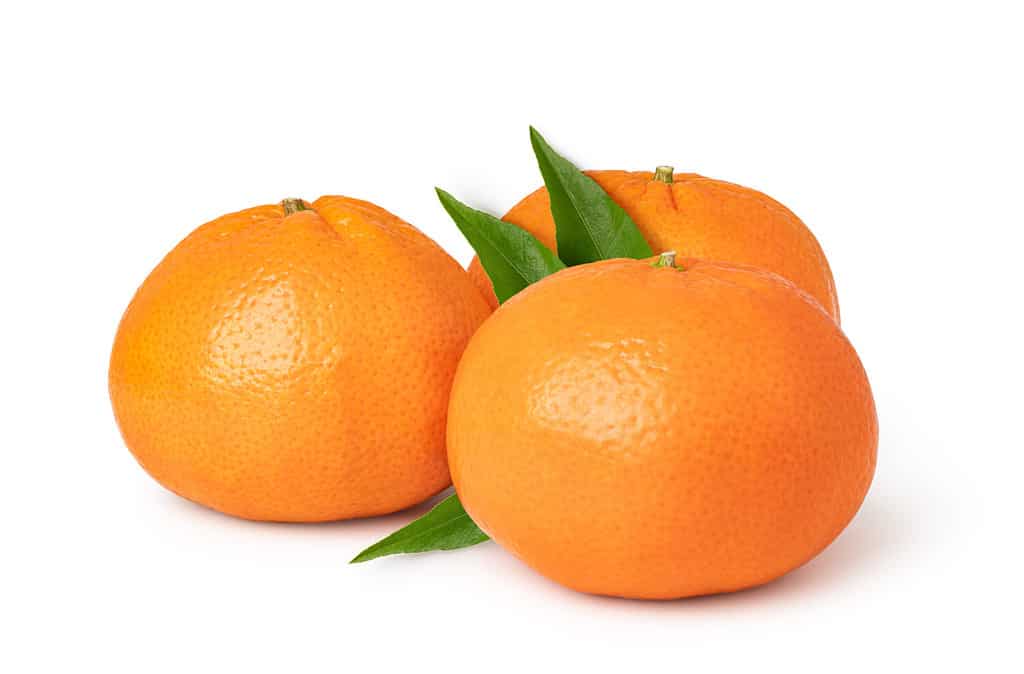
These citrus gems can be consumed fresh or added to salads and desserts.
©gresei/Shutterstock.com
5. Mamey Sapote
Next, Mamey sapote is a tropical fruit with a unique flavor that combines sweet potato and pumpkin. It’s rich in vitamins and minerals. Mamey sapotes thrive in regions like Central America and the Caribbean. The fruit is best eaten fresh, and its vibrant flesh can be used in smoothies and desserts. Fun fact: Mamey sapotes are often referred to as “chocolate pudding fruit” due to their creamy texture and sweet taste.

Mamey sapotes thrive in regions like Central America and the Caribbean.
©phortun/Shutterstock.com
6. Mangosteen
Often called the “queen of fruits,” mangosteen has a sweet, tangy flavor. It is a rich source of antioxidants and vitamins. Mangosteens primarily grow in Southeast Asia, including Thailand and Indonesia. By slicing the thick purple rind, you can indulge in the juicy white flesh. Mangosteen is believed to have medicinal properties in traditional Southeast Asian medicine.
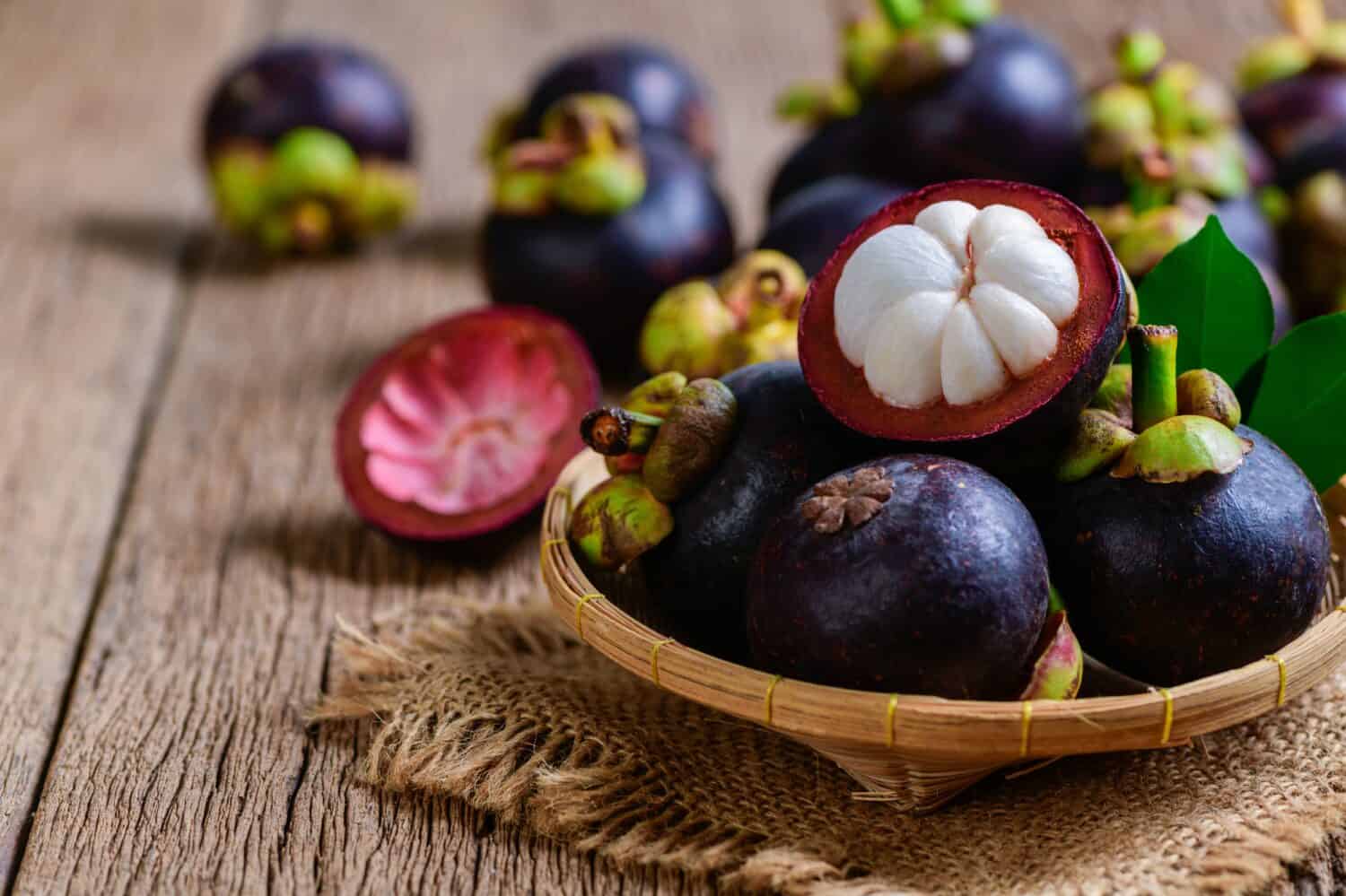
Mangosteens primarily grow in Southeast Asia, including Thailand and Indonesia.
©kwanchai.c/Shutterstock.com
7. Medlar
Medlars are a lesser-known fruit with a unique bletting process to ripen them. They are rich in dietary fiber and vitamin C. Medlars grow in parts of Europe and the Middle East. Furthermore, these fruits are often eaten fresh when their flesh has softened, or they can be used in jams and jellies. Medlars were popular during the medieval period but have since declined in popularity.
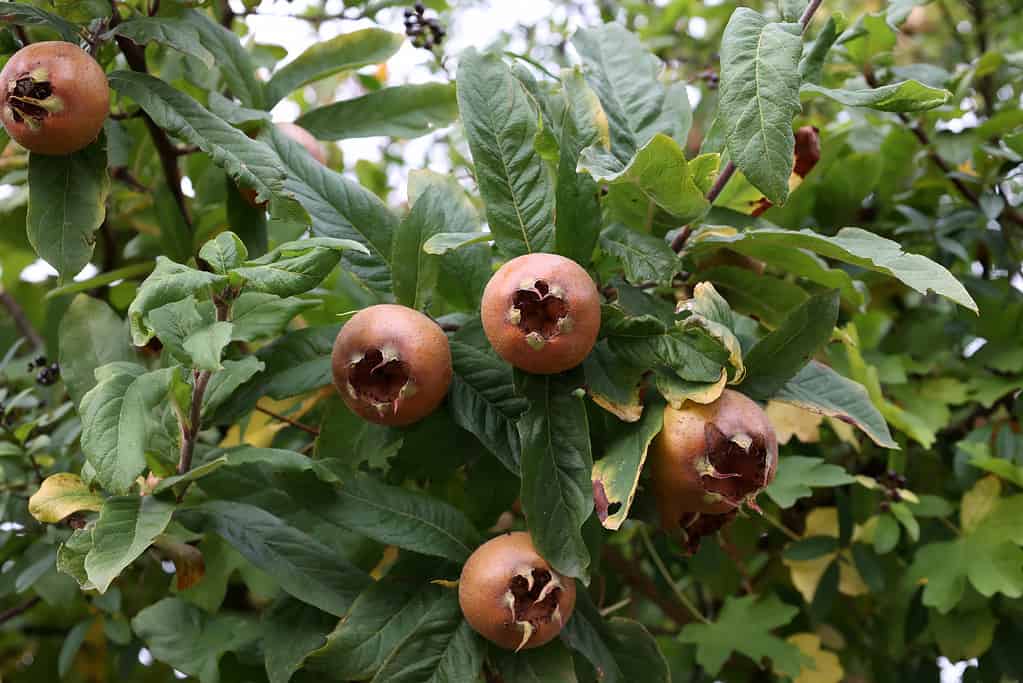
Rich in dietary fiber and vitamin C, medlars are a lesser-known fruit with a unique bletting process to ripen them.
©Leo Malsam/iStock via Getty Images
8. Miracle Fruit
Miracle fruit is famous for its remarkable ability to alter taste perception. It contains a protein that makes sour foods taste sweet. Native to West Africa, miracle fruit is usually consumed fresh before eating sour foods like lemons or vinegar to enhance their sweetness. Fun fact: Miracle fruit’s taste-modifying substance is called miraculin.
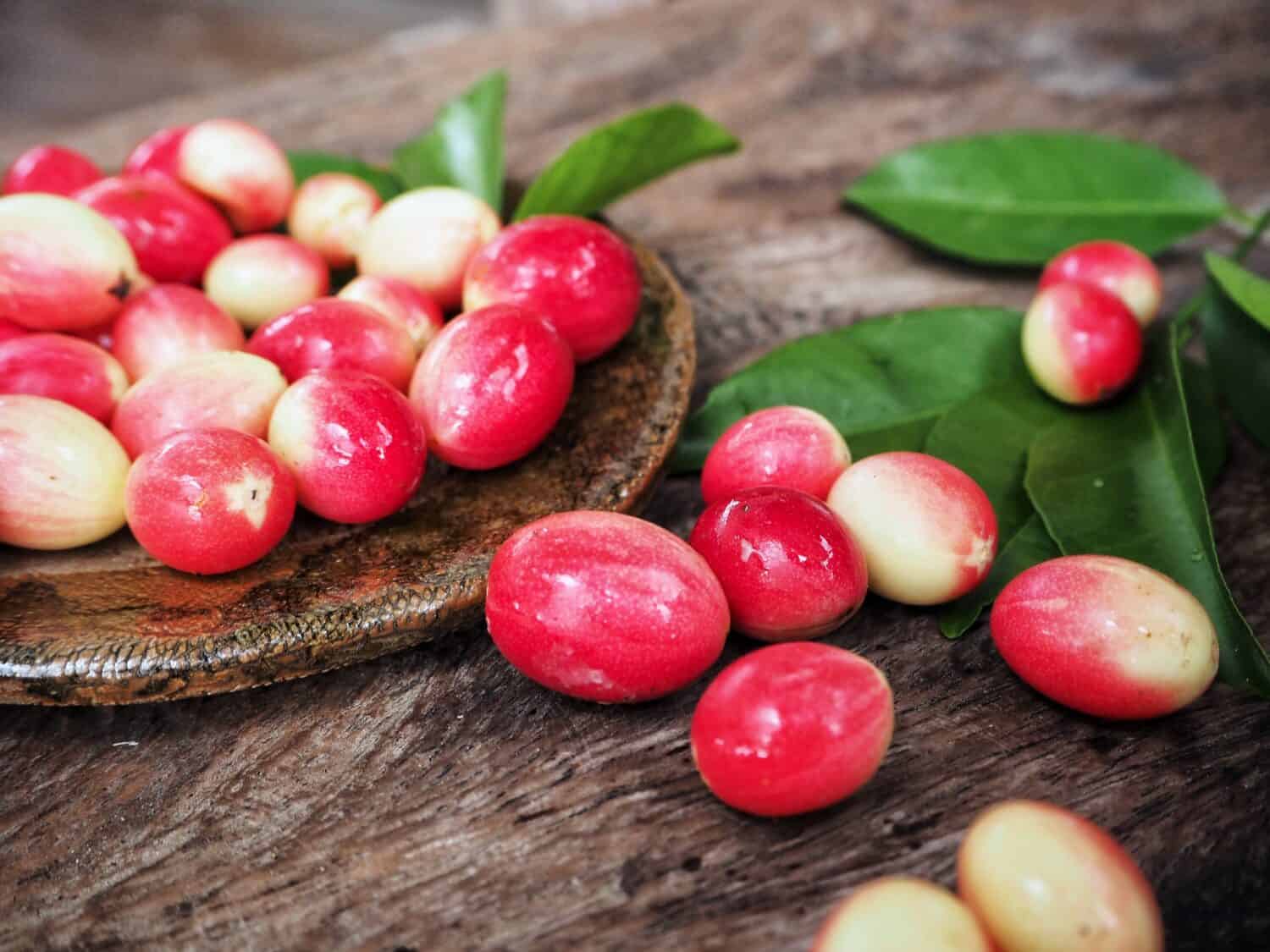
Native to West Africa, miracle fruit is famous for its remarkable ability to alter taste perception.
©successo images/Shutterstock.com
9. Mandarosa
Mandarosa, which also goes by the name “blood lime,” is a unique hybrid citrus fruit with a crimson-red flesh. It’s a rich source of vitamin C and primarily grows in Australia. Mandarosas are delicious when fresh, added to cocktails, or used in culinary dishes to provide a burst of vibrant color and flavor. What’s more, this fruit’s crimson-red color comes from its high levels of anthocyanin, a natural pigment.
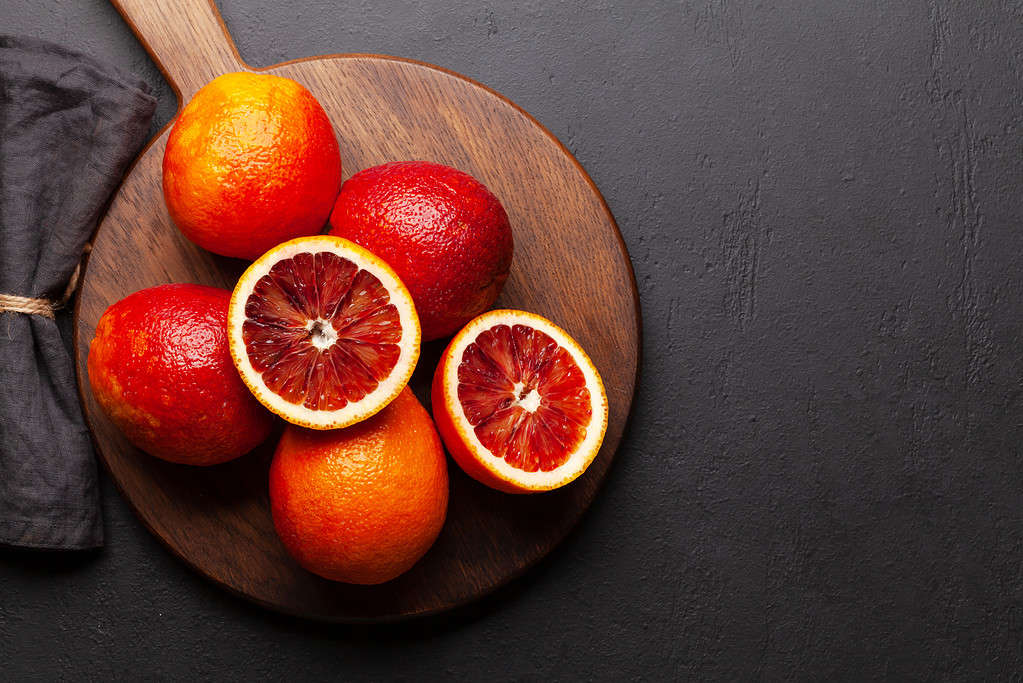
A unique hybrid citrus fruit known for its crimson-red flesh, mandarosa also goes by the name “blood lime.”
©karandaev/iStock via Getty Images
10. Mountain Papaya
Next, mountain papaya, also known as tree melon, is a small, sweet fruit native to the highlands of Papua New Guinea. It’s rich in vitamins and antioxidants. You can typically enjoy mountain papayas fresh, either sliced or scooped out with a spoon. Despite its name, mountain papaya is not related to the typical papaya fruit.

Mountain papayas are typically enjoyed fresh, either sliced or scooped out with a spoon.
©Anamaria Mejia/Shutterstock.com
11. Meyer Lemon
Meyer lemons are a sweeter and less acidic variety of lemon. They’re a good source of vitamin C and antioxidants. Meyer lemons primarily grow in the United States and China. They are versatile and ideal for a wide range of culinary applications, from desserts to savory dishes. Fun fact: Meyer lemons are believed to be a cross between regular lemons and mandarin oranges.

A sweeter and less acidic variety of lemon, Meyer lemons are a good source of vitamin C and antioxidants.
©RebeccaJaneCall/Shutterstock.com
12. Marula
Next, marula is a fruit native to Africa and is famous for its exotic flavor and aromatic qualities. It’s a good source of vitamin C and antioxidants. Moreover, marula is often used to produce a liqueur, but the fresh fruit can be enjoyed as well. Fun fact: Marula fruit is a favorite of elephants, and its tree is dubbed the “elephant tree.”
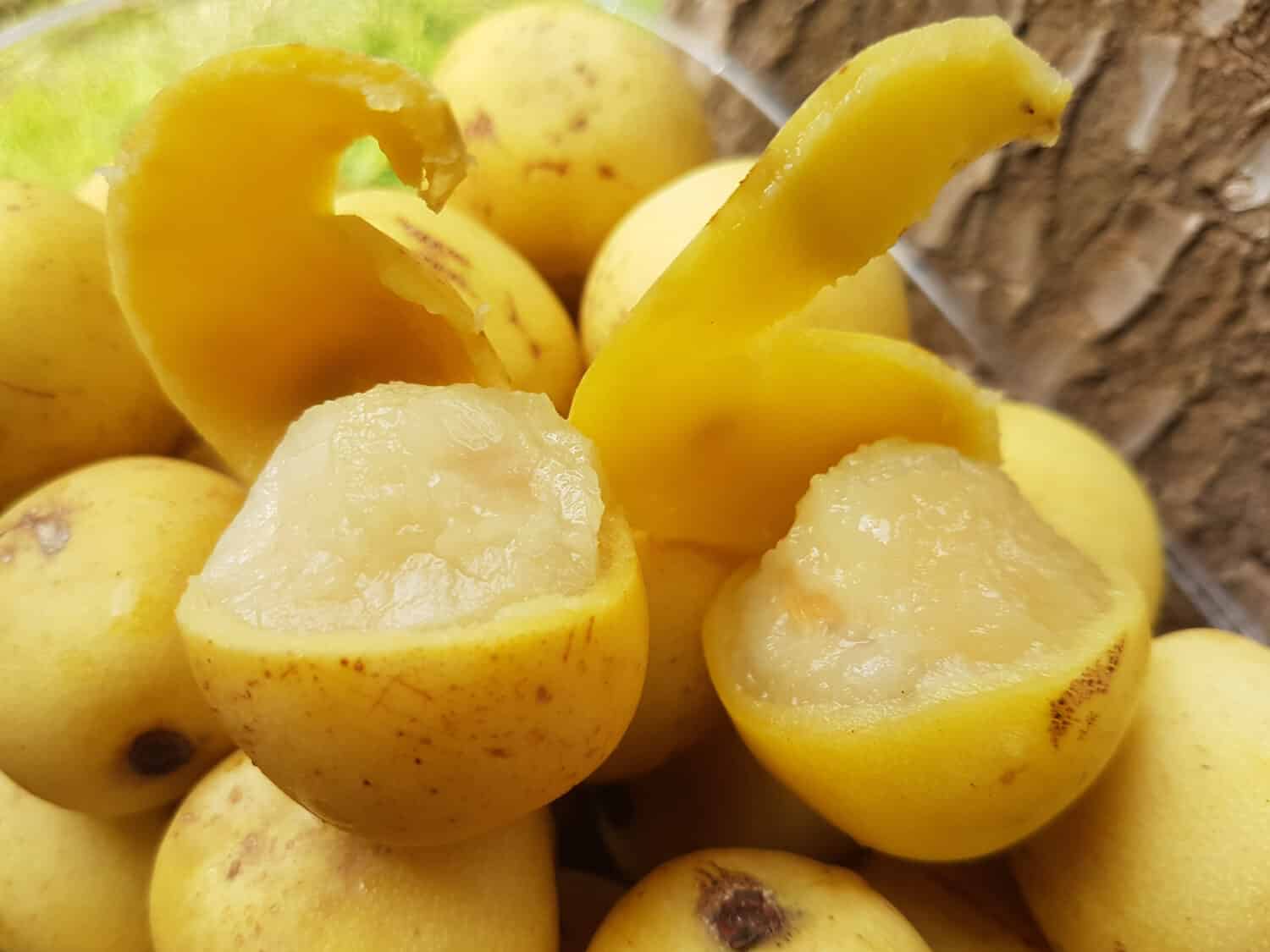
Marula fruit is a favorite of elephants.
©Ridolf Coertze/Shutterstock.com
13. Mamoncillo
Mamoncillo, often referred to as the “Spanish lime” or “genip,” is a small, green fruit that hails from tropical regions, primarily in the Caribbean and Central and South America. The fruit is about the size of a small plum and has a tough, thin skin that needs to crack open to reveal the juicy and somewhat translucent flesh. What’s more, mamoncillo has a unique combination of sweet and tangy flavors, making it a popular snack in these regions.

Often referred to as the “Spanish lime” or “genip,” mamoncillo is a small, green fruit that hails from tropical regions.
©Mabelin Santos/Shutterstock.com
14. Morinda
Morinda, also known as Indian mulberry or noni, is a fruit that thrives in tropical regions, particularly in the Pacific Islands, Southeast Asia, and parts of the Caribbean. The fruit is typically small, green, and bumpy, with a pungent odor that some find off-putting. While its aroma might not be inviting, Morinda has various potential health benefits. Moreover, it’s a traditionally used ingredient in herbal medicine and is rich in antioxidants, vitamins, and minerals. People often consume Morinda in the form of juice.

While its aroma might not be inviting, Morinda has various potential health benefits.
©Photoongraphy/Shutterstock.com
15. Mayhaw
Mayhaw is a fruit native to the southeastern United States, primarily found in areas like Georgia, Alabama, and Florida. These small, red berries grow on a type of hawthorn tree and feature a tart and tangy flavor. Mayhaw is a great ingredient for delicious jams, jellies, and syrups, and it’s a beloved staple in Southern cuisine. Ultimately, the fruit’s unique taste and versatility in culinary applications have made it a regional favorite, contributing to the rich food culture of the American South.
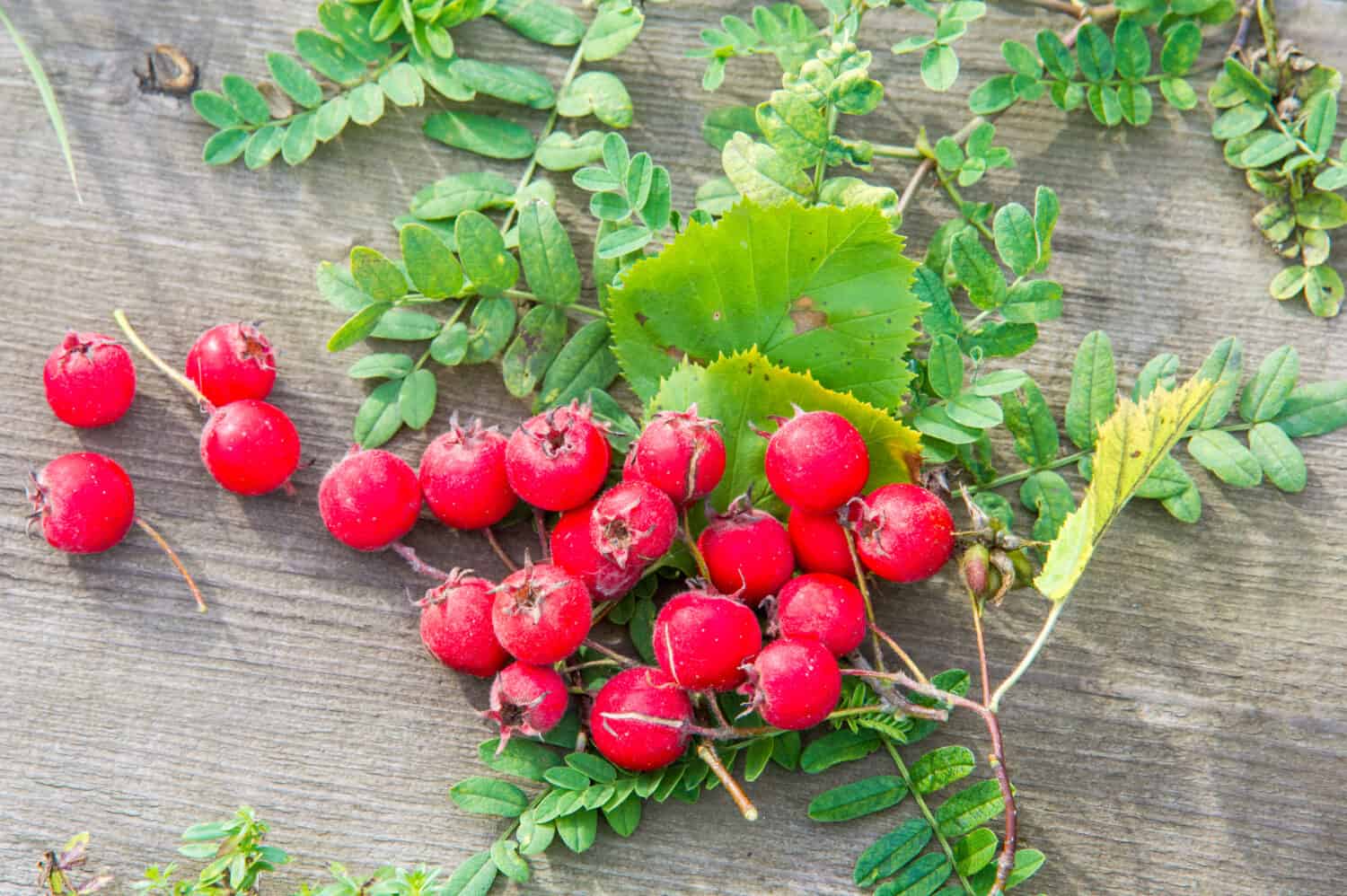
Primarily found in areas like Georgia, Alabama, and Florida, these small, red berries grow on a type of hawthorn tree.
©Sergei Mishchenko/Shutterstock.com
Conclusion
Fruits that start with the letter M offer a delectable array of flavors, nutritional benefits, and cultural significance. From the beloved mango to lesser-known treasures like the medlar, these fruits make a delicious addition to any diet. Finally, whether you’re savoring them fresh, incorporating them into your cooking, or discovering their unique characteristics, fruits that start with M are a true delight for the senses.
| Fruits Starting with Letter M |
| Mango |
| Melon |
| Mulberry |
| Mandarin Orange |
| Mamey Sapote |
| Mangosteen |
| Medlar |
| Miracle Fruit |
| Mandarosa |
| Mountain Papaya |
| Meyer Lemon |
| Marula |
| Mamoncillo |
| Morinda |
| Mayhaw |
| Makrut Lime |
| Marionberry |
| Muscadine |
| Masak Hijau Banana |
| Maqui |
| Membrillo |
Thank you for reading! Have some feedback for us? Contact the AZ Animals editorial team.







